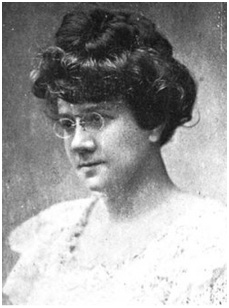 Madame Emma Azalia Smith Hackley
Madame Emma Azalia Smith Hackley
(1867-1922)
Madame Emma Azalia Smith Hackley was born in Murfreesboro, Tennessee in 1867 and migrated to Detroit in the 1870s.
She was the first African American graduate of the University of Denver Music School. By 1901, Hackley was already a well-known concert soprano, classically trained in the bel canto tradition. She began to devote herself to what became her life’s work. She described herself as a “race musical missionary,” who took personal responsibility to educate African Americans in the best of Classical culture, in order to uplift them, especially the poor, in both the North and post-Reconstruction South.
What earned Madame Hackley the epithet of “Vocal Teacher of Ten Thousands” was her continuous organizing of huge community concerts and mass Folk Festivals. Self-financed and self-promoted, a concert would be scheduled for her as the main draw to perform operatic arias, Classical compositions and African American spirituals. Choral performances by local people would be added to the programs. Her goal was to provide cultural programs of racial uplift to celebrate the “negro spiritual” throughout the country. She would work with the local performers for approximately ten days prior to the concert. She gave free classes on voice culture, lecture demonstrations and other workshops that involved all aspects of life. She emphasized the importance of character and garnering respect at all costs.
She raised funds for scholarships and established the Vocal Institute of Chicago in 1912.
Madame Hackley authored short books and numerous articles for dailies and magazines. She lectured at schools, colleges, churches, and in communities. In 1916 she published The Colored Girl Beautiful. This etiquette manual combined familiar prescriptions of Victorian womanhood with calls for racial pride and uplift. “Each colored girl may be an Esther, “ wrote Hackely, “especially in all matters of cleanliness, manners and self sacrifice, to advance and change the prevalent opinion of the Negro.” Hackley believed this individual self-help would lead to racial uplift.
Living in the post-Reconstruction era, when minstrel shows became the norm of popular entertainment, Madame Hackley refused to abandon her commitment to the coherence of culture and morality, and to the education and elevation of the spiritual qualities of even the lowliest of persons through great art.
Madame Hackley died in 1922 and is buried in Section O, Lot 26.
